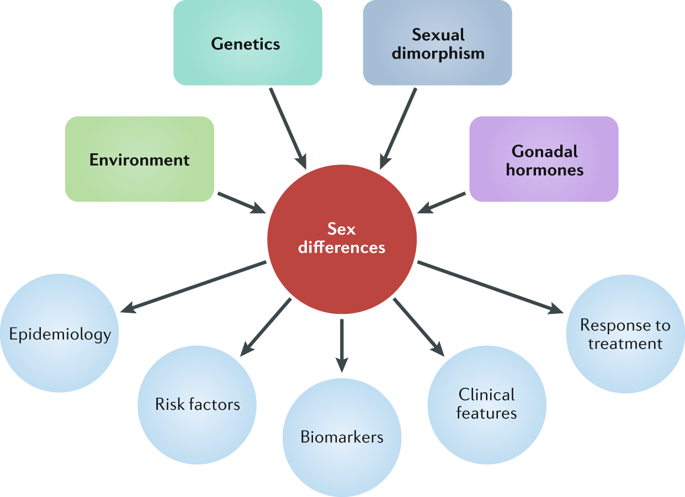当前位置:
X-MOL 学术
›
Nat. Rev. Neurol.
›
论文详情
Our official English website, www.x-mol.net, welcomes your
feedback! (Note: you will need to create a separate account there.)
Sex differences in movement disorders.
Nature Reviews Neurology ( IF 28.2 ) Pub Date : 2020-01-03 , DOI: 10.1038/s41582-019-0294-x Sara Meoni 1, 2 , Antonella Macerollo 3, 4 , Elena Moro 1, 2
Nature Reviews Neurology ( IF 28.2 ) Pub Date : 2020-01-03 , DOI: 10.1038/s41582-019-0294-x Sara Meoni 1, 2 , Antonella Macerollo 3, 4 , Elena Moro 1, 2
Affiliation

|
In a range of neurological conditions, including movement disorders, sex-related differences are emerging not only in brain anatomy and function, but also in pathogenesis, clinical features and response to treatment. In Parkinson disease (PD), for example, oestrogens can influence the severity of motor symptoms, whereas elevation of androgens can exacerbate tic disorders. Nevertheless, the real impact of sex differences in movement disorders remains under-recognized. In this article, we provide an up-to-date review of sex-related differences in PD and the most common hyperkinetic movement disorders, namely, essential tremor, dystonia, Huntington disease and other chorea syndromes, and Tourette syndrome and other chronic tic disorders. We highlight the most relevant clinical aspects of movement disorders that differ between men and women. Increased recognition of these differences and their impact on patient care could aid the development of tailored approaches to the management of movement disorders and enable the optimization of preclinical research and clinical studies.
中文翻译:

运动障碍的性别差异。
在包括运动障碍在内的一系列神经系统疾病中,与性别相关的差异不仅在大脑的解剖结构和功能上出现,而且在发病机理,临床特征和对治疗的反应上也出现了。例如,在帕金森氏病(PD)中,雌激素可影响运动症状的严重程度,而雄激素的升高可加剧抽动障碍。然而,性别差异对运动障碍的真正影响仍未得到充分认识。在本文中,我们提供了有关PD和最常见的运动亢进性运动障碍的性别相关差异的最新综述,即原发性震颤,肌张力障碍,亨廷顿病和其他舞蹈症,图雷特综合征和其他慢性抽动症。我们重点介绍了男女运动障碍最相关的临床方面。
更新日期:2020-01-04
中文翻译:

运动障碍的性别差异。
在包括运动障碍在内的一系列神经系统疾病中,与性别相关的差异不仅在大脑的解剖结构和功能上出现,而且在发病机理,临床特征和对治疗的反应上也出现了。例如,在帕金森氏病(PD)中,雌激素可影响运动症状的严重程度,而雄激素的升高可加剧抽动障碍。然而,性别差异对运动障碍的真正影响仍未得到充分认识。在本文中,我们提供了有关PD和最常见的运动亢进性运动障碍的性别相关差异的最新综述,即原发性震颤,肌张力障碍,亨廷顿病和其他舞蹈症,图雷特综合征和其他慢性抽动症。我们重点介绍了男女运动障碍最相关的临床方面。











































 京公网安备 11010802027423号
京公网安备 11010802027423号